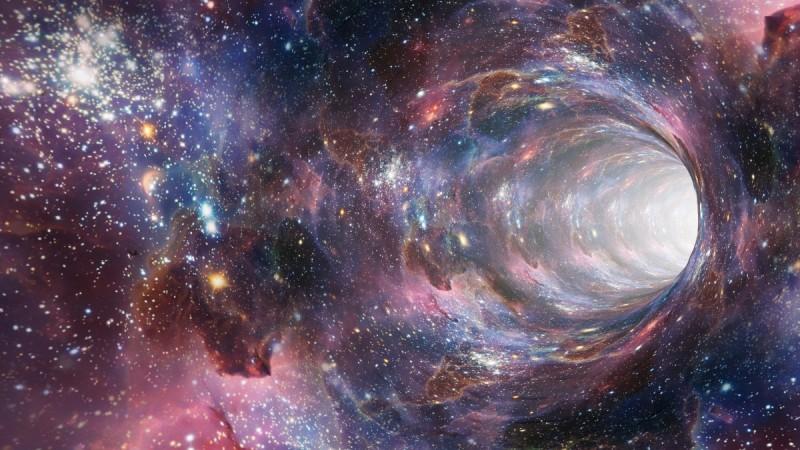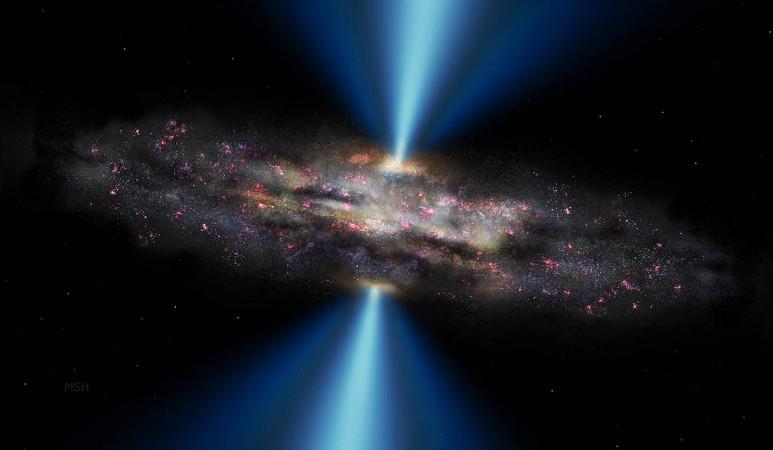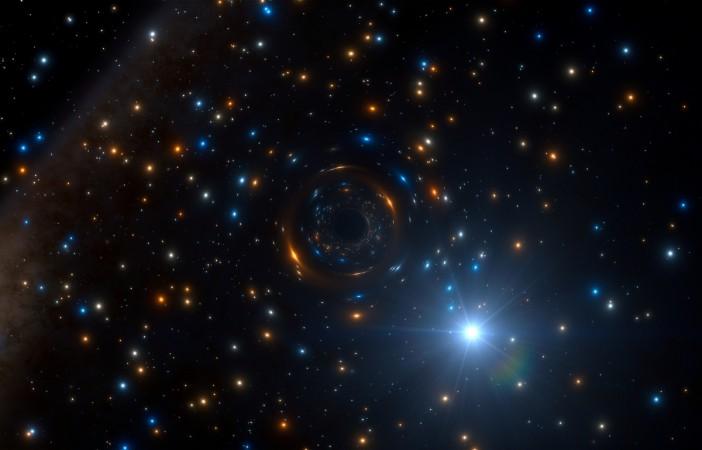
The concept of black holes still continues to confuse and remain a mystery to many, and findings of a new research by the University of California at Berkeley only add to the oddity of it. The study revealed that one could even survive getting sucked into a particular type of black hole.
But the team of mathematicians also concluded that in an ever expanding Universe, certain black holes can completely reset the past and future – erasing and messing it up. While there's no certainty about what it would look like from an observer's point of view, if proven true, it could solve one of the biggest mysteries in modern cosmology.
The laws of physics logically conclude that the entire mass of a star gets squeezed into a tiny point called singularity – a volume of space that is kept secret from the rest of the Universe as physics itself crumbles here.
And to distinguish this breakdown between the rule-based Universe and the bizarre bits of black holes where these singularities are not hidden, physicists apply a theory called 'cosmic censorship'.
Divided into two flavors, the weak cosmic censorship states that there must be a barrier deep within a black hole – deeper than the usual 'event horizon' which hides the singularities from view – beyond which every physics is canceled, leaving things unpredictable.
This barrier is to keep the 'naked' singularities hidden from the rest of space and time so it doesn't create theoretical and observational disturbances to their lawlessness.
Meanwhile, the strong cosmic censorship stresses that there's no such physical lawlessness – which mandates a disappearance of this barrier, to let physics continue in its form.
But Peter Hinz, a mathematician from the University of California, has his doubts about the second fold of the censorship. "People had been complacent for some 20 years, since the mid-'90s, that strong cosmological censorship is always verified," he said. "We challenge that point of view."

Hinz and his team study the hypothetical charged, non-rotating objects called Reissner-Nordström-de Sitter black holes – which theoretically, have a barrier called a 'Cauchy horizon' – beyond which there's a warped landscape without cause and effect and time and space is a smooth, infinite instant.
Advocates of this model believe that even the slightest deviation in the gravitational pull of a collapsing star could obliterate such a Cauchy horizon – ruling it out in favor of the strong cosmic censorship model.
But this new study reveals that the two could continue to coexist, despite such disturbances, given the Universe surrounding the black hole continues to expand at an accelerating rate like ours.
The reason behind this is primarily the charge of the Reissner-Nordström-de Sitter black holes – which would already have a slight push to resist the gravitational pull – something that would counter its time and space warping capabilities. Meanwhile, an expanding Universe like hours puts the bending of physics surrounding a singularity, at a time and energy limit.
This combination of the push and the limits offers some protection to the Cauchy horizon – resulting in both singularity that shatters physics, and an infinite instant beyond a line of no return. In this zone, objects are completely disconnected from their past and have no future either.
Crossing this line means never being able to go back, but at the same time, not being reduced to a speck either. But what it would feel like is yet to be discovered. João Costa from the Universitario de Lisboa in Portugal – a physicist and team member of the study, used a rather common concept to explain the subject.

"Thinking about Schrödinger's cat, we know we can assign probabilities to the cat being alive and dead," Cardoso told Edwin Cartlidge at physicsworld.com. "But if the cat were to fall inside the Cauchy horizon we could not even compute these probabilities."
This has single-handedly amped the strangeness of a black hole, beyond that of quantum mechanics. At the same time, the Reissner-Nordström-de Sitter black holes probably don't even exist, which makes the exercise is a philosophical one. However, the conclusions drawn aren't entirely useless.
The mathematics involved stick true for neutrally-charged black holes, and the researchers argue it can even prove true in the gravitational waves from colliding black holes – which would finally offer us a glimpse into the parts of the Universe where everything is hidden and locked away forever.
At the same time, Hintz's study also concludes that the cosmic landscape is full of such black holes, or worm-holes, as they are also known. While there's no tell-tale assurance of being sucked into one of them anytime soon, the study comes as a striking reassurance that if at all any matter did get sucked into one - it would most probably survive.
This research was published in Physical Review Letters.

















